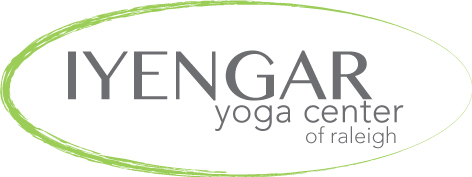What is Iyengar Yoga?
The Iyengar approach to yoga is based on the traditional eight limbs of yoga by Patanjali in his classic treatise, The Yoga Sutras. Iyengar yoga emphasizes the physical alignment of the body in asanas (poses) creating a sense of strength, stamina, flexibility, and balance as well as concentration (Dharana) and meditation (Dhyana).
One of B.K.S Iyengar’s innovations is the use of props, chairs, blocks, blankets, straps, bolsters, sand bags, benches, walls. The purpose of the props is to assist the student to attain ideal alignment and enable them to have experiences that they wouldn’t be able to otherwise. The method is appropriate for anyone regardless of age, degree of health or other perceived limitations.
Born on December 14th, 1918, B.K.S. (Bellur Krishnamachar Sundararaja) Iyengar developed his method of teaching over more than 70 years. He was one of the world’s most acclaimed yoga masters and a pioneering force in bringing yoga to the West. Until his passing in 2014, Iyengar continued to refine his art of yoga through daily asana and pranayama practices. His final book, Light on Life, chronicles his decades of experience as a dedicated practitioner and teacher. To learn more about Iyengar, visit his official website.
Looking for more information? Try here.
What does it take to become an Iyengar Certified Instructor?
One has to first practice and study Iyengar Yoga for a minimum of three years before becoming eligible for starting the certification process. Testing cannot be done until the candidate has studied with a certified mentoring teacher and taught exclusively in the Iyengar method for two years. During the testing process, candidates are carefully observed and evaluated by junior or senior-level instructors as they demonstrate asanas and pranayamas and teach a class of students. Each certified Iyengar Yoga instructor has passed at least two rigorous, standardized assessments. Instructors must be committed to maintaining the high standards of Iyengar Yoga and the pure method of B.K.S. Iyengar as well as continuing their own personal practices and training with senior teachers.
How can I register?
If you are a prospective student and are interested in signing up for a class you must:
- Email or call Graham to find out what class may be right for you and to make sure there is space. Some things to consider when looking at classes:
- Do you have any major physical/medical injuries that may prevent you from doing any poses?
- Your yoga experience.
- Whether you've taken an Iyengar class from an Iyengar certified instructor.
- If you are you interested in a Level I class, have you done Shoulder Stand with 3 blankets and a strap? If you are interested in a Level II class, have you done Shoulder Stand (with 3 blankets and strap) and Headstand?
- After confirming with Graham what class is appropriate, fill out the student form and send payment by venmo, zelle or check. I do not take credit cards. Preregistration is required for the class you are taking.
Can I drop into a class?
Drop-ins are always welcome when space allows! We’re happy to have you at any time. Pre-registraion is required, so if you are interested in signing up for a class, please contact Graham. Drop-ins are $22 for a 90 minute class, $18 for a 60 minute class.
How do I prepare for class?
What do I need bring to class?
The studio is stocked with props but it's a good idea to bring your own mat.
What do I need to wear to class?
Wear comfortable clothing that allows for movement.
Can I eat before class?
Please do not eat more than a light snack 2 hours before class.
What if I am menstruating?
Please tell Graham before class if you are on your cycle and she will give you the appropriate poses to do. The 3 things to remember when you are menstruating: 1) No Inversions. 2) No abdominal strengtheners. 3) No deep twists.
What if I am pregnant, can I take a class series?
If you have never taken Graham’s classes before they will not be appropriate for you if you are pregnant. Email Graham for more details.
Remember to do your home practice!
What poses should I be doing at home?
It can be hard to know where to start with your home practice. The Iyengar Yoga Institute of New York has prepared two practice sequence guides, each featuring four complete sequences with asanas from the Level I and Level II syllabi. Level II sequences include Salamba Sirsasana. Practice these sequences according to your capability. Repetitions are recommended to avoid strain.
The Yoga Place in LaCrosse, WI, also has some great sequences by Chris Saudek. We recommend the Level 1 and Level 2 sequences to start. Again, practice these sequences according to your capability. Repetitions are recommended to avoid strain.
Download pdfs for Level I and II sequences
Where can I park?
Studio Parking Lot- In the parking lot located in front of the studio, there are a total of 6 rows. Please leave the first row, next to the leaning retaining wall, vacant until the studio owner arrives. If you see a green Subaru parked there, you can park your car behind it, but make sure to keep the space free until the owner arrives. No parking pass needed for this lot!
Parking Lot Next to Studio- There is a parking lot directly next to the studio where the restaurant has closed down. You can park in any of the spaces on the side, which can be accessed from Morgan Street
Parking pass is required for the upper lot. Please ask for one when you arrive.***
There are also street parking spaces on Boylan Street or other side streets.
What are the class and payment policies?
Visit the pricing page for more information.

